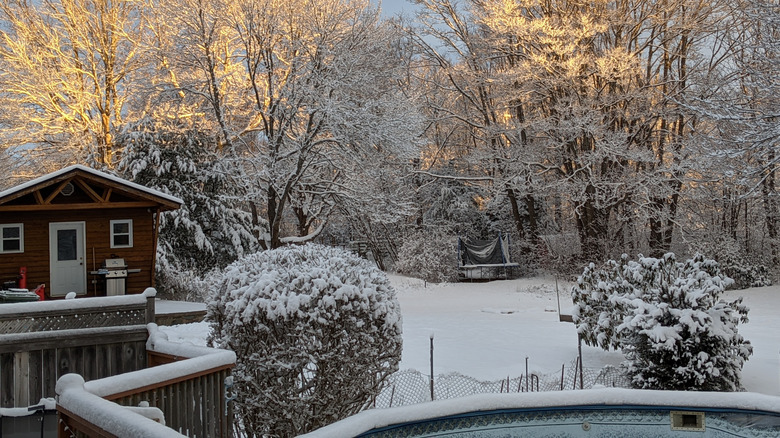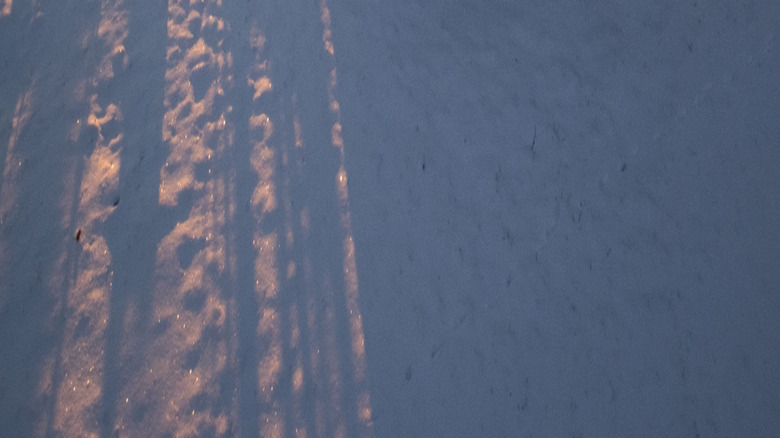The One Place You're Probably Forgetting To Winterize
Winter will be here before you know it. If you own property, this is the perfect point in the year to start thinking about how to prep your home for cold weather. Your current checklist probably includes the usual suspects — think insulating vulnerable pipes, draining and removing your garden hoses, and sealing any drafty windows, doors, or vents in your home. However, there is one place on your property that might not be on your radar: your shed.
Like your home itself, that shed in your backyard needs to be weatherproofed, particularly if it's uninsulated, for protection against extreme weather. Without preparation, exposure to harsh winter weather can wreck havoc, resulting in leaks, damage to your possessions, and possibly even structural damage to the shed itself. Thankfully, winterizing a shed isn't difficult. It just takes some time and effort on your part. Here's everything you need to know to get yours in tip-top shape before the temperatures plummet for the season.
Tips & tricks for properly winterizing your shed
Your first order of business for winterizing your shed? Get the contents organized! Before winter comes, clean up any debris inside your shed, get rid of any unwanted supplies or possessions, and organize all the tools and supplies you decide to keep. That way, you'll re-familiarize yourself with everything you're storing here and help prevent moisture buildup. (As a general note: Unless your shed is insulated, don't store any valuables or delicate home items there during the winter. The freezing-cold temps could damage them.)
Next, you'll want to perform a thorough inspection for any gaps or signs of damage. And don't just look inside your shed — check out its exterior, too. How does the siding look? What about the roofing and roof joints? Are there any cracks that need fixing or drafts you ought to seal up? Using some rodent repellent on the inside and outside of your shed isn't a bad idea, either. You don't want any critters taking shelter from the cold in your shed.
Safeguarding against excessive exposure to cold air and moisture is key. Otherwise, you could end up with moldy ceilings in your shed, rusted gardening tools and appliances, or heavy piles of snow that won't drain off the roof. To keep mold out of your shed during winter, consider weatherstripping all doors and windows. You'll also want to clear leaves or debris from your shed's exterior and gutters and double-check that its drainage system is up to par. For added protection, you might look into installing a vapor barrier or insulating your shed for extreme weather — though, depending on the climate in your area and what you plan to use your shed for, this last step might be overkill. It all depends on your needs and budget.

